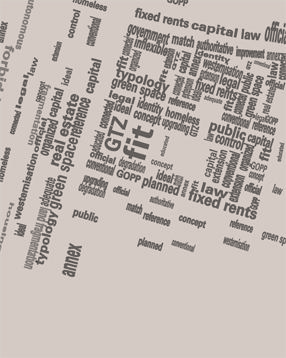Imbaba

Students: André Perronnet, Thomas Rodemeier
Location: Cairo
Date: October, 2010
Type: Research project, student work
In the 1960s demographic increase as well as rural urban migration to the city created the urgent need to provide housing for the growing population of Cairo. Massive public housing projects were carried out in the poor and mostly densely populated districts of Cairo (eg. Zainhom, Ain al-Sira, Helwan and Shubra al Khima) as part of the Nasserist vision of social redistribution. The Workers’ City in Imbaba with about 1000 dwelling units which began construction before the revolution was the first of the public housing production and was by the end of the decade sold to their occupants. Due to the severely austere design of the basic accommocations, with minimal square footage that disregard the demographic reality of family structures and generational growth, extensive additions made by the dwellers have altered the volumetric and structural composition of the housing projects, creating a new landscape of informality thattached to the original which could accommodate growing family and intergenerational dependencies.
Imbaba’s as the stronghold of the Muslim Brotherhood or Game’ah Islamiyya, was at one point the self-declared Republic of Imbaba. This was the breeding ground of the Islamic movements which spread through the Middle East in the 70s and 80s. Riots in Cairo in January 1977 also had a large effect on the area, marking it as a hub of contention as well as an enclave of political resistance to a structure of governance that has failed the people in favour of the neoliberal developments. The rising importance of the Islamists in seizing the opportunities for governance is inseparable from the observations to be made in this neighborhood.
This topic will look at the transformation of this neighborhood from the early model for public housing, produced under an ideology of socialist state-controlled economy that redistributes wealth and provides for all classes, to its survival as the place of resistance. How everyday activities of urbanism operate and how spatial productions reflect the larger shift in ideology will be investigated here.
Download the Book PDF

